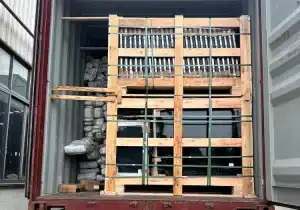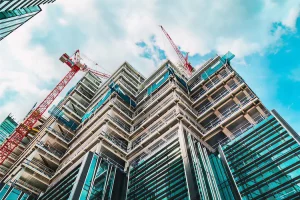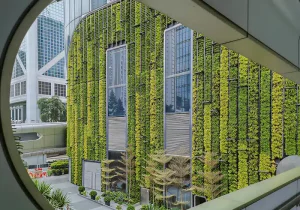
The Hidden System Behind Cross-Border Facade Delivery
The Hidden System Behind Cross-Border Facade Delivery When people admire the shape of a tower or the clarity of a glass facade, few notice the

Curtain walls, particularly glass curtain walls, are non-load-bearing outer walls of buildings that are supported by a structural framework and can accommodate limited movement relative to the main structure. These systems generally do not carry the building’s structural loads. Glass curtain walls which are available in single or double-glazed formats have become a defining feature of modern high-rise architecture. Below we will learn about how the curtain walls develop in China and the principles on the curtain wall design.
The continuous advancement of glass manufacturing technology has significantly expanded its application and development in the construction industry. The evolution of glass curtain walls can be roughly divided into the following key stages:
With increasing international exchange, advanced architectural technologies gradually made their way into China, leading to remarkable progress in curtain wall engineering. A landmark moment came in 1981 when the main facade of the Canton Fair Exhibition Hall featured China’s first modern glass curtain wall installation – marking the beginning of China’s glass curtain wall era.
When designing curtain walls, it’s not just about how they look. A good design checks multiple boxes: safety, function, visual appeal, environmental performance, cost, and maintenance. Here are the six essentials:
Curtain walls need to hold up against real-world forces—wind, heat, seismic shifts. The system should be engineered with the right safety margins and follow all relevant building codes.
An elegant building needs a facade that complements, not competes. The curtain wall should bring out the best in the building’s design—clean lines, smooth transitions, and visual harmony.

A well-designed system finds the balance between strength and weight. It should feel light and open, but still be solid. The right profiles and sealing details make all the difference in keeping the wall stable without looking bulky.
Today’s curtain walls do more than shield the outside—they’re part of the building’s energy strategy. Smart material choices, such as low-E coatings, thermal breaks, and shading devices, help cut down on heat loss or gain. That means more comfort inside and lower energy bills.
Things break, glass can crack, or maybe a panel just needs swapping. A good system makes that process simple, without disturbing the rest of the wall or leaving a visual scar.
Finally, once the basics are covered, the design should make financial sense. That means smart material use and efficient installation—all without sacrificing performance.
Conclusion
Curtain walls are more than just exterior protection of building—they’re a statement of how a building connects with its environment. By sticking to these six principles, designers and engineers can create facades that are not only safe and smart but also truly attracting.

The Hidden System Behind Cross-Border Facade Delivery When people admire the shape of a tower or the clarity of a glass facade, few notice the

What Developers Really Look for in Façade Partners — and Why It Matters Picking the right façade partner may look easy at first. However, anyone who’s handled a

Green Building Trends: Aluminum vs. Stainless Steel for Living Façades As green building shifts from trend to standard, the building’s “skin” is undergoing a transformation.

Burj Al Mana Tower: The Story Behind Its Complex Façade and Engineering Rising over Doha’s West Bay, the Burj Al Mana Tower has a story